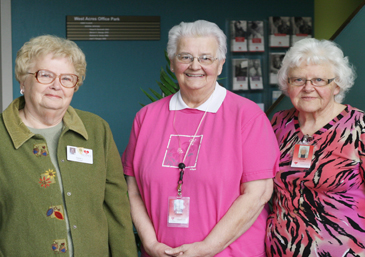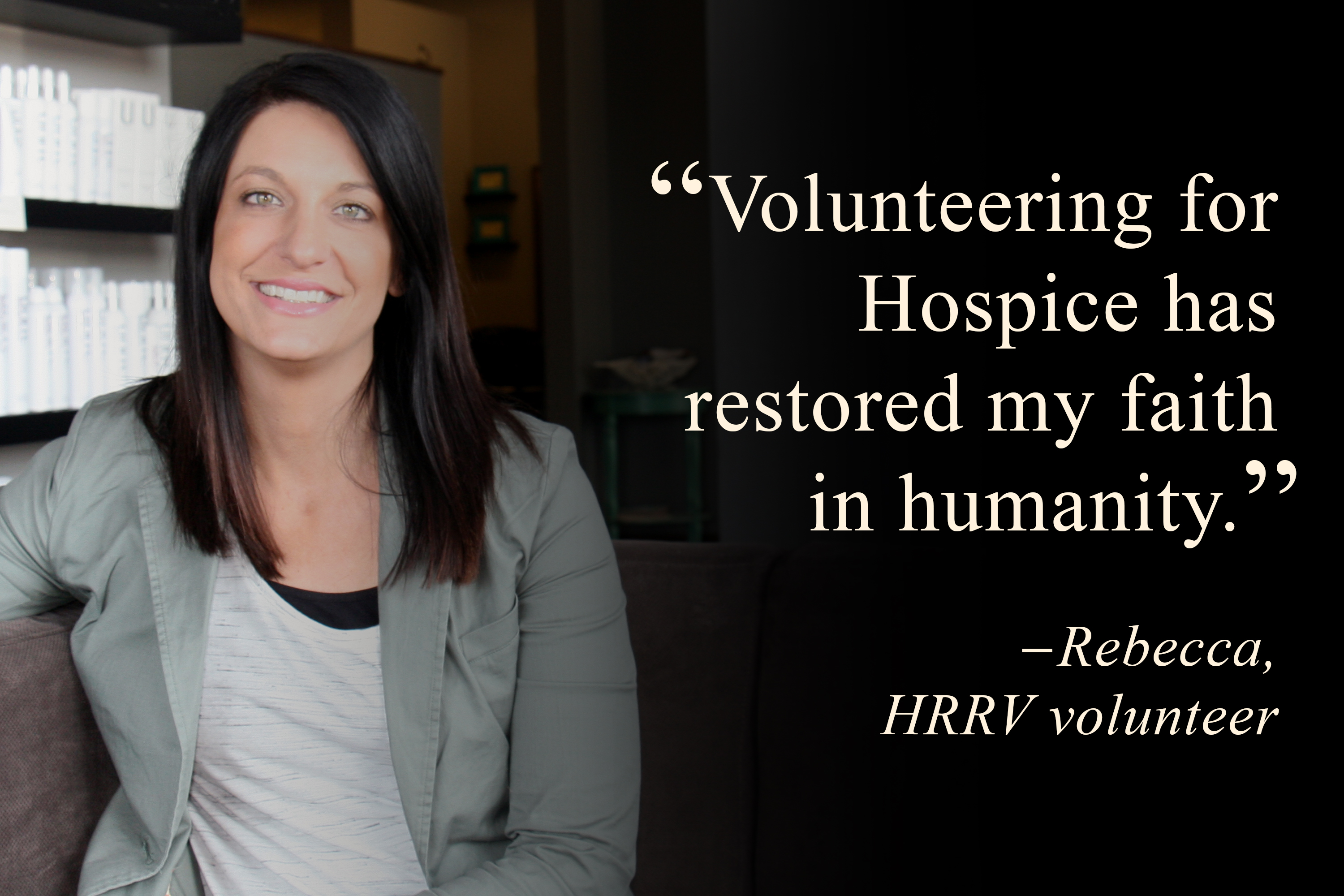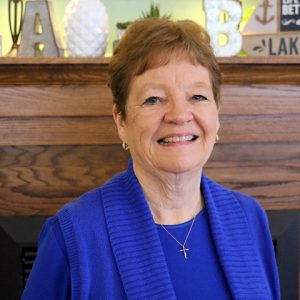Volunteers have played a pivotal role since Hospice of the Red River Valley’s inception 30 years ago. Today, more than 500 volunteers share their time and kindness with patients and their families throughout our service area.
Three of these volunteers— Leona, Gayle and Arlene—have served the organization since its earliest years. During their 56 years of combined volunteer service, they have spent thousands of hours providing companionship and caregiver relief to dozens of patients and families.

Arlene began volunteering for Hospice of the Red River Valley in 1982. “My last child was in school, and my days were beginning to free up,” Arlene explains. “I knew about the organization through a friend who worked there, and decided to see what I could to do to help. So, I took the training course, and here I am today.”
When Leona decided to volunteer in 1983, her reason was very personal. Leona’s husband was the fifth patient to pass away under the newly formed Hospice of the Red River Valley. Leona recalls the anxiety both she and her husband felt about utilizing the program at his physician’s suggestion. When a year had passed since she lost her spouse, she decided to give back in hopes of providing comfort and reassurance to other families walking the same path.
Similarly, Gayle heard firsthand the impact Hospice had on families. A friend’s husband had passed away under hospice care several years before. “Every time I’d see her, she’d talk about Hospice, and the support they provided,” Gayle recalls. “She had no family, and Hospice provided the support they needed. I told myself, ‘I need to get into volunteering for Hospice.’” A few years later, she made good on her promise and began volunteering in 1984.
Throughout the years, all three women witnessed changes as the organization grew. In
the early years, they had responsibility for everything from transporting patients to providing follow-up grief support following the death. As the organization expanded and regulations changed, staff members with expertise in these areas were added. Today, Gayle, Leona and Arlene’s roles as volunteers focuses on the aspects they enjoy most—providing relief for caregivers and companionship to patients.
All three women agree that what has remained constant through the past three decades is the satisfaction they receive from their experiences. Each of them has countless stories of memorable visits and the individuals who touched them deeply.
Leona remembers visiting a young woman who was struggling with her situation: “My assignment was to help with a few household things. The entire time I was doing chores, the woman angrily spoke about several things she didn’t like about her situation. After 45 minutes, she said, ‘I’ve been ragging at you for a while now, and you’ve been taking it all. Now, tell me, just why in the world do you do this?’”
Leona continues, “I addressed the concerns she had brought up. As for why I do this, I told her I saw a need for people wanting to be comfortable in their own homes. They want to die at home, and that can be made possible by many people working together, including me. And, I like people. I get to meet people.”
She recalls the woman’s response, “‘You lose them all too, don’t you?’ I told her, ‘You’re right, I do lose patients; they do die. But, everyone who comes into my life enriches me in one way or another.’”
“She and I became very good friends during the remainder of her time on hospice care,” Leona says with a smile.
Gayle and Arlene have similarly memorable experiences of those who have enriched their lives with friendship, engaging conversation and shared interests.
“One of my most memorable patients loved to play Scrabble—and I’m terrible,” Arlene remembers fondly. “He got the biggest kick out of that; he thought it was just wonderful to beat me!” she says with chuckle. “Little did he know, I’m just not any good!”
Gayle shares a similar story. “My last patient loved to play cards. When I’d arrive, she had the cards ready to go, and that’s what we always did. I love to play cards too, so it was a perfect fit,” she explains. “I miss her very much.”
The three agree that along with their affiliation as hospice volunteers comes a sense of responsibility to be hospice advocates in the community.
“Most people I know today are hospice supporters,” Arlene says. “It wasn’t always that way. When I started out, I used the word ‘hospice’ very carefully. Back in the early years, people would ask, ‘Hospice? Doesn’t that deal with…dying people?’ There was a lot of uncertainty and fear about it. It’s come a long way.”
Gayle agrees. “It started out being much unknown, and not as supported as it is today.”
Leona has a different take. “When people tell me hospice only matters to dying people, I tell them, ‘Dying people, yes; but that’s you and me,’” she says. “It matters to all of us.”
With so many years of service under their belts, why do these volunteers keep giving their time?
“I can’t even imagine not volunteering; I get just as much out of the experience as the patients do,” Gayle explains. The other two women agree.
“People need the diversion of something new in their lives,” Leona adds. “In volunteering, I help myself more than I do the patients and families.”
Reflecting on the future of the organization, Arlene summarizes the feelings of many. “I just want it to keep going. It’s important that Hospice survives and grows. My experiences with patients have taught me how I want to die—with grace and dignity.”




